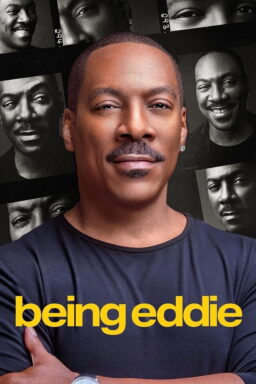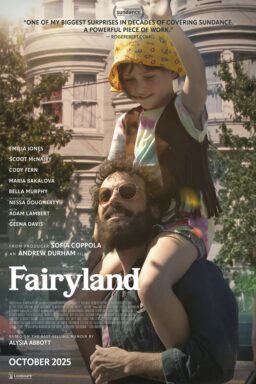PARK CITY, Utah I saw a group of interesting films about African Americans at this year’s Sundance Film Festival, the big annual showcase for new independent films. And as I sat down to write about them, I realized that black films in America have long been “independent.” Only recently, with a new generation of stars, have they moved into the studio mainstream.
For many years the Hollywood establishment was interested in black-themed movies only under carefully defined circumstances: They could be romantic historical dramas like “Gone With the Wind,” or safe human comedies starring Harry Belafonte or Sidney Poitier, or musicals like “Porgy and Bess,” or occasionally an uplifting “message picture” like “Guess Who's Coming to Dinner.” But they could not reflect the everyday realities of black life in America – and, of course, there was always a lid on the budget.
During those years there was an independent, invisible black cinema – movies made by black people for black audiences, and distributed to theaters in black neighborhoods. Television, which featured a lot of black faces even if it didn’t break new ground, killed that market. Starting in the late 1960s, films like “Shaft” and “Sweet Sweetback” created a “blaxploitation” genre of films that often weren’t very good, but were redeemed by energy and by their attempts (in the words of the time) to “tell it like it is.” Those films created stars like Pam Grier and Richard Roundtree, and they gave work to a lot of artists and technicians – until they were swept away in the mid-1970s by the rise of the big-budget special effects pictures.
Then there was a 10-year drought in black movies, interrupted occasionally by an interesting mainstream film, told usually from a white liberal point of view, until the rise of Spike Lee, whose “She’s Gotta Have It,” “School Daze” and (especially) “Do the Right Thing” re-created black cinema by sheer force of will and style. Within a few years there were titles like John Singleton’s “Boyz N the Hood,” the Hughes brothers’ “Menace 2 Society” and many more. Hollywood discovered there was a dependable audience for black stars and themes. And actors like Morgan Freeman, Whoopi Goldberg, Eddie Murphy, Denzel Washington, Samuel Jackson and Whitney Houston became box-office powers in mainstream studio films. Black faces returned to prominence in American movies, this time apparently for good.
But during all of those years, there was an independent spirit in a lot of black films, if only by necessity. At Sundance, an indie film is roughly defined as one made outside the studio system, on a restricted budget, usually without big names, and often with a daring or experimental subject matter and filmmaking style. This could be the definition of countless films by or about African Americans.
This year at Sundance, I saw four such films of special interest: “Black & White & Red All Over,” “Blacks and Jews,” “Family Name” and “love jones.” Two were documentaries, one was a love story and one can only be termed an African-American “art film,” although that hardly captures its impact.
“Black & White & Red All Over,” the art film, is set almost entirely in one inner-city room in Cambridge, Mass., where six friends come and go, talk and argue, smoke pot and watch television. There’s no conventional plot, but a story emerges: Drug deals and old feuds have created a situation filled with danger, and the underlying subject is the self-inflicted genocide of black-on-black crime.
But the film is not a crime film. The six friends, despite the illegal activities of some of them, are not bad people (well, one is). They have been dealt a hand and are playing it as cleverly as they can. They don’t dwell on the evils of society or the wrongdoings of whites, but are entirely absorbed by their own world. It includes a lot of television, and their take on the BET channel is pointed and cynical. It also involves music, philosophizing, sex and the fact of unemployment, along with a lot of booze and pot.
Spike Lee often finds unique visual effects for his movies, and this film, directed by DeMane Davis, Harry McCoy and Khari Streeter, has one of its own: a scene seen entirely from the point of view of a joint. We get tunnel vision in the center of the screen, which is surrounded by a round red border that glows and fades as the joint is inhaled. This device dramatizes the way that everything in the room is being filtered through smoke.
The actors (Thomas Braxton Jr., Lord Harrison, MyQuan, Damian, Rob Florestal and Naomi Ramsey) are very good, inhabiting dialogue that ranges from four-letter ghetto-speak to bright thoughtfulness. And the plot unfolds almost invisibly; by the end, we know why everything is happening even though the preparations were made offhandedly. Distributors at Sundance seemed to shy away from the film, maybe fearing it would be over the heads of the action crowd and too Ebonic for the art houses. Yet it’s in films like this that discoveries are made.
“Blacks and Jews” addresses a current issue fraught with emotion and anger on both sides. These two American minority groups were traditional allies, as part of the left-liberal alliance that manned the civil rights movement. Then things changed with the rise of black power; African Americans questioned white leadership roles in the movement, and Jews (who held many of them) were hurt. Both groups turned inward, and the wound was deepened by the anti-Semitism of Louis Farrakhan and the pseudo-scholars who linked Jews with the slave trade.
The documentary was produced by two Jews (Alan Snitow and Deborah Kaufman) and an African American (Bari Scott). After a too-brief prologue about the good relations of the past, it moves on to the bad times of the present. It examines the riots in Crown Heights, Brooklyn, where Jews were attacked by black mobs after a black child was killed by a runaway car from a Jewish motorcade. And it shows how raw feelings worsened: After filming a conversation between an Orthodox Jew and the black man who saved him from mob violence, the movie shows a headline in the New York Post. DAY OF HATE, it says, over a photo of the bloodied man; there is no mention of his savior, which would have complicated the story.
The film also considers a 1966 Chicago alliance of black homeowners and Jewish activists, led by Rabbi Robert Marx, who formed the Lawndale Contract Buyers’ League to fight against the real estate agents who were profiting from block-busting. The league led a rent strike; old TV footage shows hundreds of homeowners being evicted. Marx, interviewed today, is amazed that “in the 1960s people were mature enough to see this was not a black-Jewish issue, but an economic issue.”
The film moves on to consider Farrakhan, who is shown making statements so anti-Semitic that no amount of explaining can possibly defuse them. “He threw a hand grenade into black-Jewish relations,” observes black Stanford professor Claybourne Carson.
Then there is a segment on blacks in Hollywood, leading to a look at the Oakland incident where black students on a field trip were unruly during a viewing of “Schindler's List.” The news coverage painted their behavior in anti-Semitic terms, but it’s pretty clear they would have talked through any movie (they had thought they were going skating). Steven Spielberg visits their school and recalls, “I was thrown out of `Ben-Hur’ for talking”; Gov. Pete Wilson, at the same school assembly, is told by a plucky student body president that he’s obviously there for campaign publicity.
The producers of “Blacks and Jews” told the Sundance audience they hoped the film would inspire discussion, and so it will, and must. Some will observe that it selects only episodes of unfortunate black behavior; it refers to prejudice in both communities, but illustrates only one. It is a provocative but frustrating film that covers so much ground that most of it remains murky; perhaps each of the sections deserves a film of its own. Nothing is settled and closure is impossible, but this is a helpful contribution to the repair of a wrongly damaged relationship.
Macky Alston’s “Family Name,” which shared the festival’s Freedom of Expression Award, tells the story of a tireless investigation into the past by a young white man who grew up noticing that most of the black kids in his Southern school were also named Alston. Was this because slaves took the name of their masters? Or was there perhaps also a blood link, deeply buried in the past?
For three years Alston questions everyone he can find, and pages through ancient records. Very old people remember meeting ancestors who were slaveholders, or slaves. A possible connection is made: a white Alston who might have fathered a line of light-skinned black Alstons (a distinguished family). But trails die out, memories fade and nobody seems willing to talk, until a series of revelations at the end of the film.
Whether or not all the Alstons are related, “Family Life” achieves a strong emotional payoff. It opens with two Alston family reunions, one black, one white, a week and a few miles apart, neither attended by anyone who knows about the other. At the end, all the Alstons gather on the lawn of a family plantation for a biracial reunion and concert. It is a deeply moving scene.
I’ve already written about “love jones,” directed by Theodore Witcher, which shared the Sundance Audience Award. It will find the largest audience of any of these films, with a story of two black professionals (a writer and a photographer) who fall in love and then face a year of difficulties caused by insecurity and old wounds.
What is new about this film is that it’s set entirely within the thriving black middle class of Chicago; we’ve seen the skyscrapers in the background, but much of the foreground – the restaurants, homes, bookstores and cafes – has not been seen in movies before. And neither have the people, who in their class and creativity could have stepped out of one of Woody Allen’s big-city romances. The movie causes a slight shock; we realize that most black-themed movies are genre action pictures, hood dramas or fantasies; successful middle-class blacks are the new “invisible men” of the movies.
“What is a movie?” someone asked during a panel discussion at Sundance. My answer would be: It is an art form that hopes to absorb us so completely that we have the sensation, for a time, of living other people’s lives. Movies could do a lot to bring us together, if we didn’t always insist on seeing stories about ourselves.










